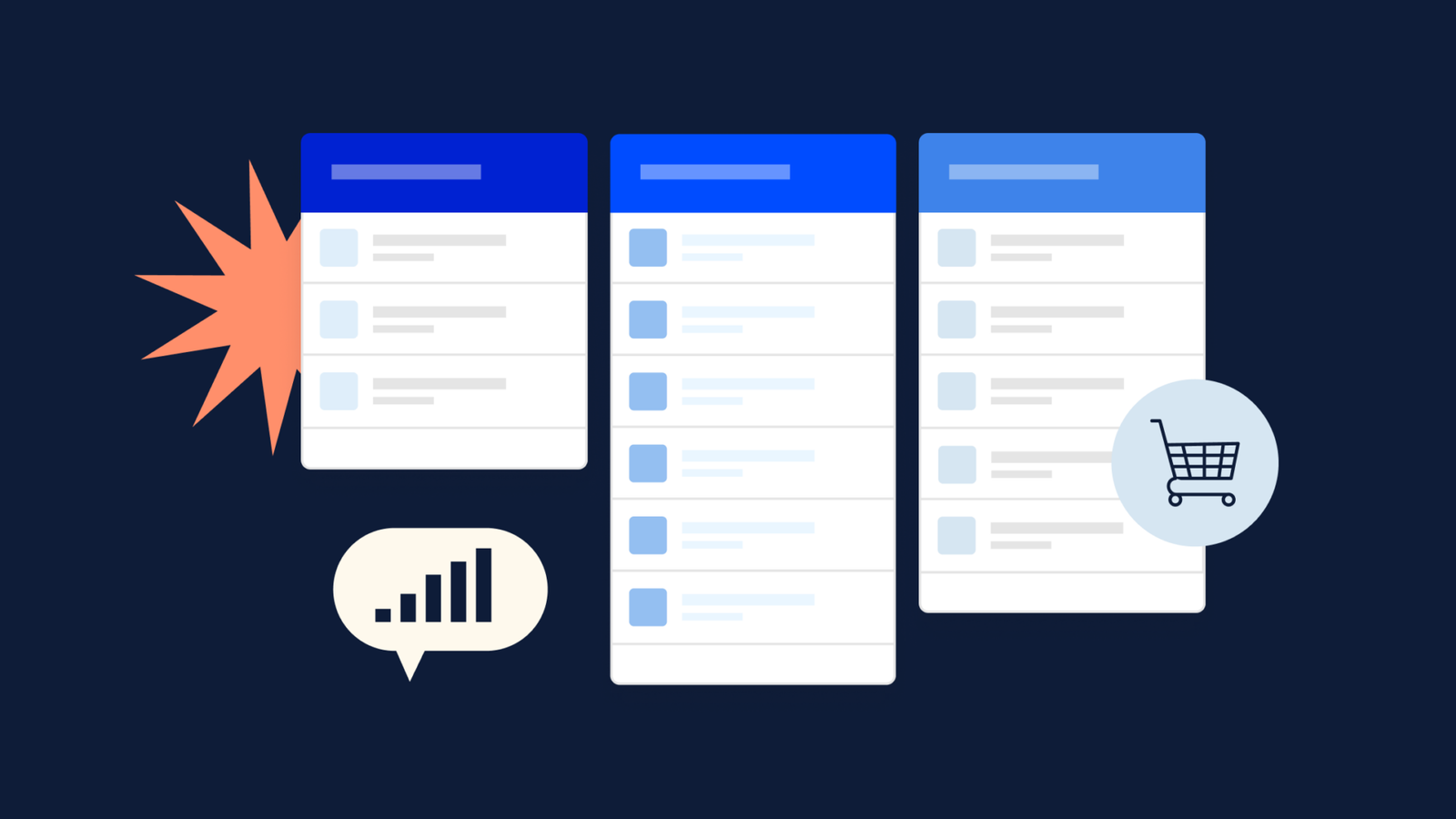Your marketing team needs a way to measure the impact of your efforts on the organization. Every campaign should take you a step closer to your business goals.
But how should you measure your success?
Most businesses have an abundance (if not an overwhelming amount) of data. You could spend days trying to absorb all the information in Google Analytics alone.
What should you be paying attention to?
This article introduces you to the 23 most useful marketing KPIs and helps you identify which ones are right for your organization and campaign.
What’s a KPI?
A KPI, or Key Performance Indicator, is a numeric value that measures your performance in a specific area. You can use KPIs to evaluate the success of individual campaigns or your marketing efforts as a whole. For instance, brand awareness isn’t a KPI, but the number of brand mentions on social media is a KPI.
Why are marketing KPIs important?
Marketing KPIs let you know when something's working and when it's not. When you run campaigns, KPI data helps you identify problems to fix or successful tactics to repeat.
KPIs also can be used to convince upper management to budget for more marketing activities or to show new clients your past successes.
However, KPIs are only important if you do something with them.
Tracking marketing KPIs isn’t about making pretty charts — it’s about having the data you need to optimize your campaigns and make better marketing decisions.
And for that, you need to pick the right KPIs to measure.
How to choose the best KPIs for marketing to track
More data isn’t always better.
Tracking every possible marketing metric is a waste of your valuable time. Narrow down your KPIs to a few that reflect your goals.
Align KPIs with SMART goals
KPIs aren’t goals, but they do tell you whether you’re on track to meet yours.
Your marketing objectives will help you choose KPIs that matter. The best kind of goals are SMART.

SMART goals are:
Specific: Like your KPIs, your SMART goals have a narrow focus. For example, your goal might be to increase website traffic by 10% this quarter.
Measurable: You won't know if you've met your goals unless you can measure them. This is where your KPIs come in — they tell you how you're doing on your SMART goal. Make sure you know what tool you'll use to measure each KPI. In the website traffic example, you could measure it with Google Analytics.
Attainable: You’d love a 1,000% increase in traffic, but it’s probably not feasible. If possible, look at past data to set an optimistic but achievable goal.
Relevant: Do you have this goal for a reason? Each specific goal should fit in with overall company objectives. For example, if your company is looking to increase awareness of a new product, you could track visitors to the product page or email opens about the product.
Time-based. Do you want to get a 10% traffic increase this week, this quarter, or this decade? Your SMART goals should indicate where you want your KPI to be within a specific time period.
Avoid vanity metrics
Vanity metrics are KPIs that make your marketing team look good but aren’t actually useful. Any metric has the potential to be a vanity metric if it’s not helping you make optimal marketing decisions.
For example, the number of social media impressions is usually a vanity metric. Sure, it feels good to know a lot of people are seeing your posts. But it doesn’t matter how many eyes you have on your content if none of them are interested in your product.
Social shares are a better metric. When people share your posts, social shares indicate that your followers see value in what you have to say.
To choose the right KPI, ask yourself: How will I use this information to make better decisions?
Consider the customer lifecycle
A good marketing strategy is strong at every stage in the customer lifecycle.
Your team might be great at engaging with prospects but struggle to get leads to convert, or vice versa. To make sure you’re performing well across the board, you should track KPIs for each stage of the customer journey.
Now that you know how to choose the right KPIs for your goals, let’s take a look at some of the most common metrics and why they matter.
Customer KPIs
Customer KPIs track your success at acquiring paying customers. While many KPIs are focused on a particular part of the marketing mix, customer KPIs can be used to look at how your marketing work is performing as a whole.
Marketing Revenue Attribution
Marketing revenue attribution measures how much of your organization's revenue comes from marketing efforts. You can track marketing-attributed revenue as a whole or look at different types of marketing campaigns. For example, you can pinpoint revenue from organic traffic and social media.
Leads
When you get contact information from a potential customer, it’s called a lead.
Some leads are more valuable than others. The more interest the contact has already shown in your company, the more likely they are to convert. That’s why, in addition to the total number of leads, most businesses track marketing-qualified leads and sales-qualified leads.
- Marketing qualified lead (MQL). Marketing-qualified leads have engaged with your organization in some way. They might have downloaded an ebook, added items to a shopping cart, or visited your website repeatedly. These leads may not be ready to convert yet, but they’ve shown an interest in what you have to offer.
- Sales qualified lead (SQL). SQLs are leads that have been deemed ready for direct contact from the sales team. SQLs are closer to being ready to convert than MQLs are.
Customer Acquisition Cost (CAC)
The CAC is how much money it takes to convert a lead to a customer. Knowing this number helps you evaluate which campaigns bring in customers for the lowest cost.
When calculating your CAC, consider factors like:
- Marketing technology subscriptions
- Manpower
- Ad spend
- General overhead
Customer Lifetime Value (LTV)
Customer lifetime value is the predicted amount of revenue an average customer will generate for your business over the entire lifespan of your relationship with them. Customer lifetime value is calculated using the following formula:
Average purchase value x purchase frequency rate x average customer lifespan
Understanding customer lifetime value helps you understand how much you can spend to acquire a customer with new marketing campaigns.
Return on Investment (ROI)
In marketing, ROI refers to how much revenue your marketing campaigns bring in compared to how much you spend. It’s an important metric for assessing your marketing efforts. It also helps you budget for future marketing projects.
Email marketing KPIs
Email marketing has a great ROI, earning $35 for every $1 spent. Tracking KPIs can help you maximize that potential.
Here are a few email marketing metrics to keep an eye on.
List subscribers
Before you can send any emails, you need an email list. To create a high-quality list, you can use opt-in methods like subscription forms on your website or signups at trade shows.
Tracking the number of list subscribers as a KPI helps you evaluate the success of these methods. You also can look at what percentage of your list has ever opened an email or clicked on a link in a campaign.
Inbox placement
We like to imagine all of our emails landing in the inboxes of our subscribers, but some of them will get filtered into spam or junk folders and others will bounce.
A poor inbox placement rate could reflect several problems, including:
- You’re using words that trigger spam filters.
- People are marking your emails as junk.
- You’re sending too many emails at once.
- Your list has inactive email addresses.
Email open rate
Your open rate is the percentage of people who open the email. As a benchmark, the average email open rate for marketing emails is 25% for B2C emails and 22% for B2B emails. The email open rate can be used to track the success of your subject lines.
Click-through rate (CTR)
Your CTR is the percentage of subscribers who click on the links in your emails. It’s a good marketing KPI for determining if your subscribers find your content engaging and relevant.
You can track CTR as total clicks, or you can look at unique clicks — how many individual subscribers clicked at least once.
Conversion rate
The conversion rate measures how many subscribers who click a link in your email complete the desired goal. For example, if you're building awareness by offering an industry white paper, downloading that white paper could count as a conversion. For an email campaign focused on selling your product, a sale would be a conversion.

Unsubscribes
Did one of your emails cause hundreds or thousands of people to take their names off your list?
If too many people are unsubscribing from your list, it could mean:
- They didn’t opt into your list.
- Your content isn’t relevant to the segment you targeted.
- You’re sending too many emails.
Website and content marketing KPIs
These metrics help you understand how your website (and individual pieces of content) are performing. You can learn what brings visitors to your website, what keeps their attention, and what convinces them to convert.
Website traffic
You can track visitors to your site by sessions or individual users.
By itself, website traffic can easily become a vanity metric. A graph showing a big spike in site visitors makes everyone feel good about their efforts.
But you can make it an actionable KPI by combining it with other information, like the source of the traffic or the pageviews per session.
Bounce rate
The bounce rate of a website or page is the percentage of visitors who come to the site, view just one page, and then leave.
A high bounce rate can mean:
- Visitors to your site don’t find the content relevant.
- Navigation makes it difficult to move from one page to another
- People are finding what they need on the first page they land on
Resource downloads
If you have downloadable content like industry white papers, tracking downloads can be a good top-of-funnel content marketing KPI.
Visitors who download a white paper probably aren’t ready to convert yet. But tracking this KPI is a way to see how successful you are at reaching potential customers in the early stages of their journey.
Conversion rate
A conversion can be any desired action that you want a site visitor to take. You can track the conversion rate of your entire site or of a particular content piece or landing page.
Video views or podcast plays
If your marketing strategy includes media like videos or podcasts, you can track how many people engage with that content. You may even measure how long people watch or listen to the media.
Paid advertising KPIs
These metrics track your performance with pay-per-click (PPC) advertising, like Google Ads or Facebook Ads.

CTR
You can calculate the click-through rate for a PPC ad by taking the total number of impressions (the number of times the ad was seen) and dividing it by the number of times it was clicked.
CTR reflects how appealing your ad is to its audience. If your CTR is low, it could mean you need to improve the ad itself. It also could mean that you’re targeting the wrong people or that people aren't seeing the ad. For example, a Google search ad in the third position on the search results page will have a lower CTR than the more noticeable ad in the first position.
Conversion rate
You could have a 100% CTR, and it wouldn’t do you any good if the people clicking the ad aren’t interested in your business. To find out if they are, you have to track what they do after they follow the ad.
If you have a high CTR but the people who click aren’t converting, it could be that they were expecting something different when they saw your ad. Does the ad copy align with the content of the landing page?
Conversion rate isn’t the only way you can measure the value of your PPC traffic. For example, you can look at bounce rate, time on page, or average page views per session.
Cost per acquisition (CPA)
This metric is also called cost per conversion. It’s a measure of how much you need to spend on advertising to get a conversion.
Customer acquisition costs can vary wildly by industry. For example, the most expensive customers are in the computer and electronics industry with an average CPA of $101.40. The least expensive are in the auto industry with a CPA of $26.17.
Other PPC KPIs
Your PPC ad platform might have some specialized KPIs worth tracking. With Google Ads especially, there are several advanced metrics.
For example, if you have a brick-and-mortar business, you could track how many people viewed your ad and clicked to “get directions” to your location with Google Maps.
Social media KPIs
A social media presence is essential — 43% of internet users research products on social media before they buy.
But your social media marketing is about much more than product information. Today’s customers want the chance to engage with a brand they like, often long before they buy.
Followers
Social media followers can be a valuable metric of brand awareness. It also can help you measure the success of a marketing activity, like a Facebook ad aimed at getting people to like your page.
But make sure you’re looking at the quality of your followers, too. Getting a million Facebook likes is useless if they’re not engaged with your brand. To measure that, check out the next two metrics.
Shares
Social shares indicate that social media users are engaged with your brand. They find your content valuable and worth sharing with a wider audience. Social shares are important for building brand awareness and reputation.
Conversions
Building a social media audience is only useful if your social media users convert.
A conversion takes place when a user that comes from social media completes a goal action, like a sale or a download. The conversion might take place on your website, but if the user follows a social media link, you can count it as a social media conversion.
How to track marketing KPIs
Tracking your KPIs should never be a tedious manual process. You need the ability to quickly check the latest numbers at any time.
For most marketing metrics, you can find easy-to-use software tools that will take care of marketing reports so you can track your KPIs.
You can track many marketing KPIs with ActiveCampaign features like:
- Campaign performance reports: See the data of all your sent campaigns.
- Site tracking: Track what people are doing on your website and follow up automatically.
- Integration with Google Analytics: Insert tracking links into your campaigns and measure the conversions on Google Analytics.

Final thoughts
The KPI examples on this list are the ones we've found to be most relevant to our campaigns, but they're only a small fraction of the metrics you could choose to track.
Measuring your performance allows you to maximize the impact of your marketing efforts — that’s why it's important to identify actionable KPIs that will help you reach your unique marketing goals.









